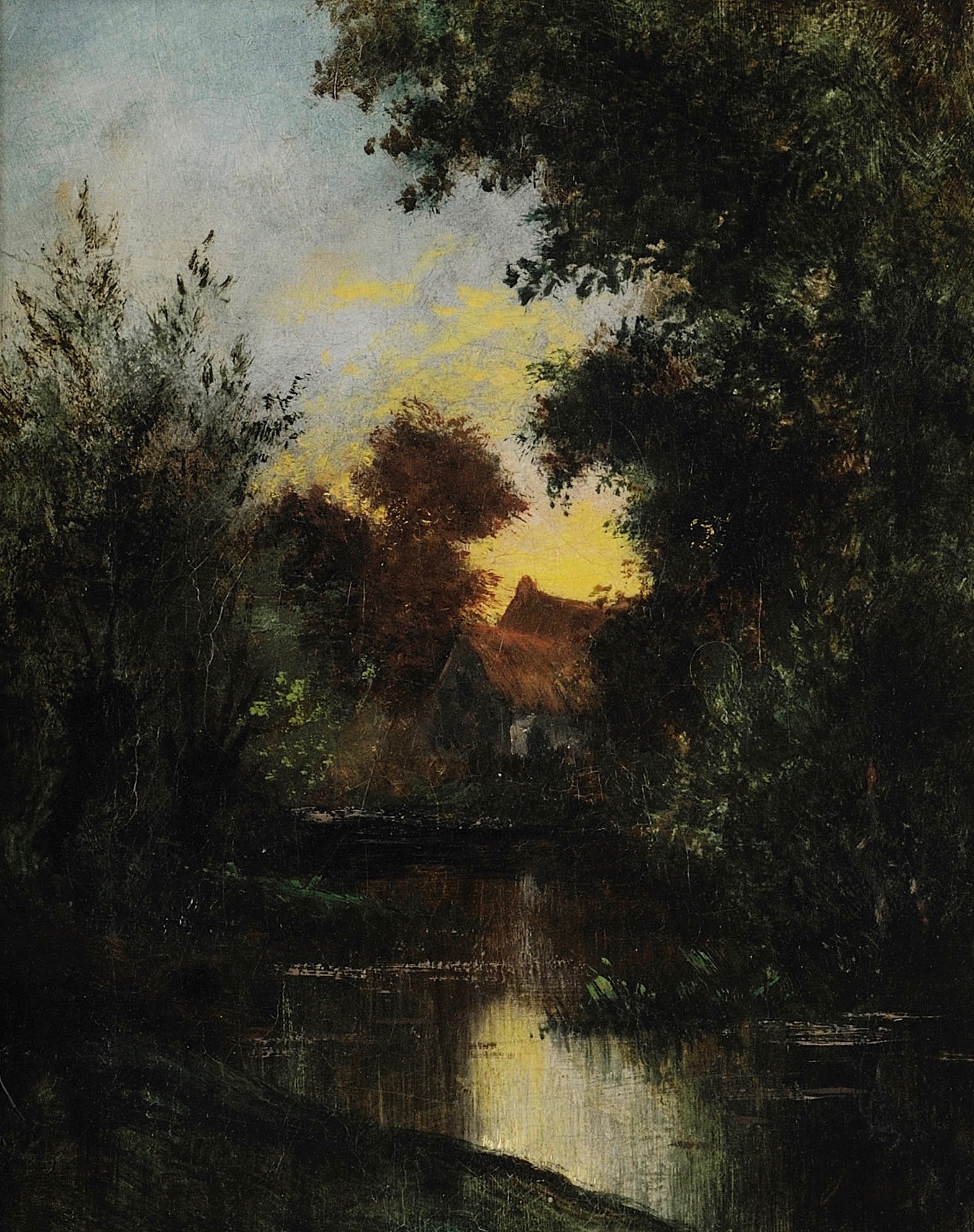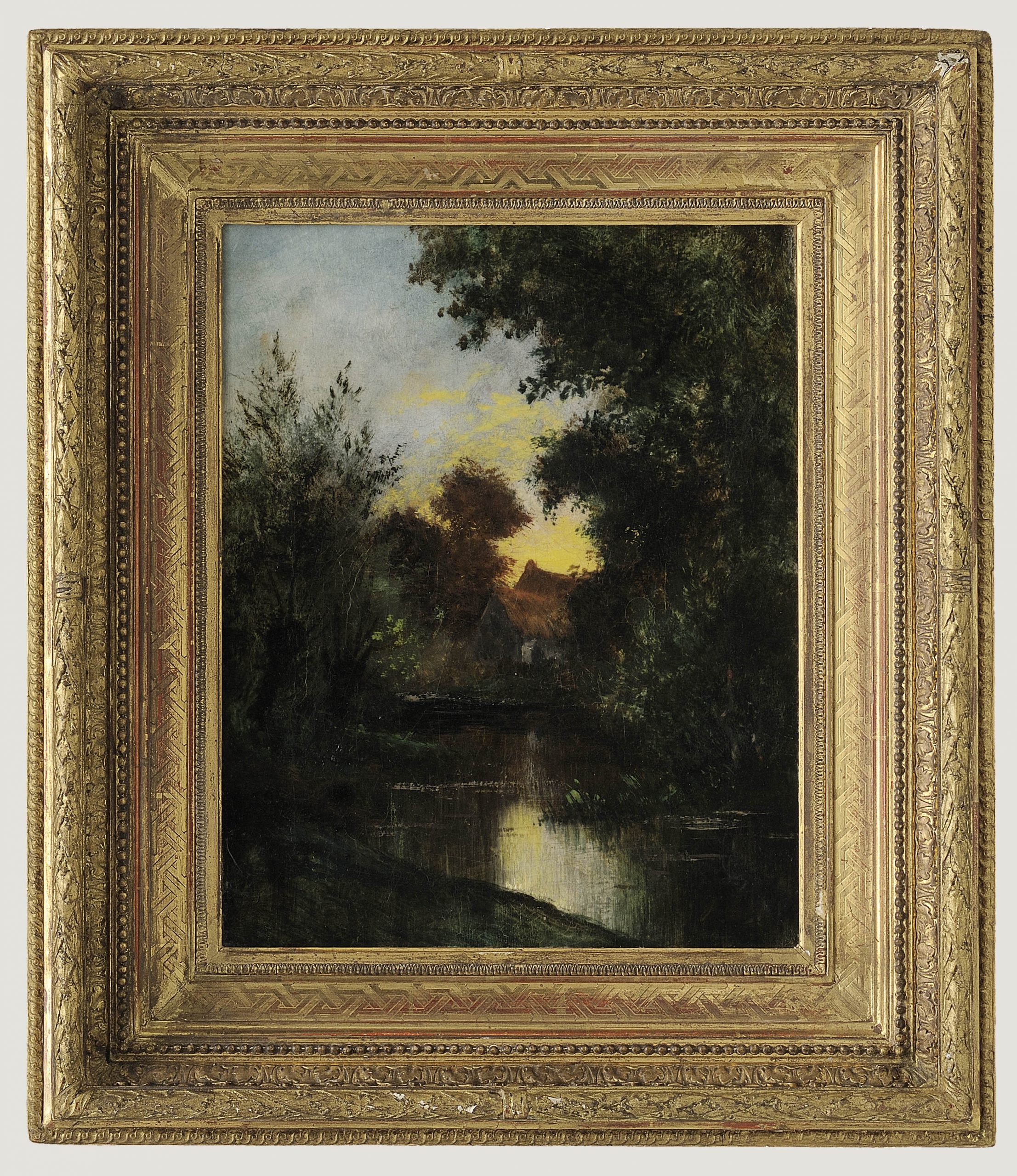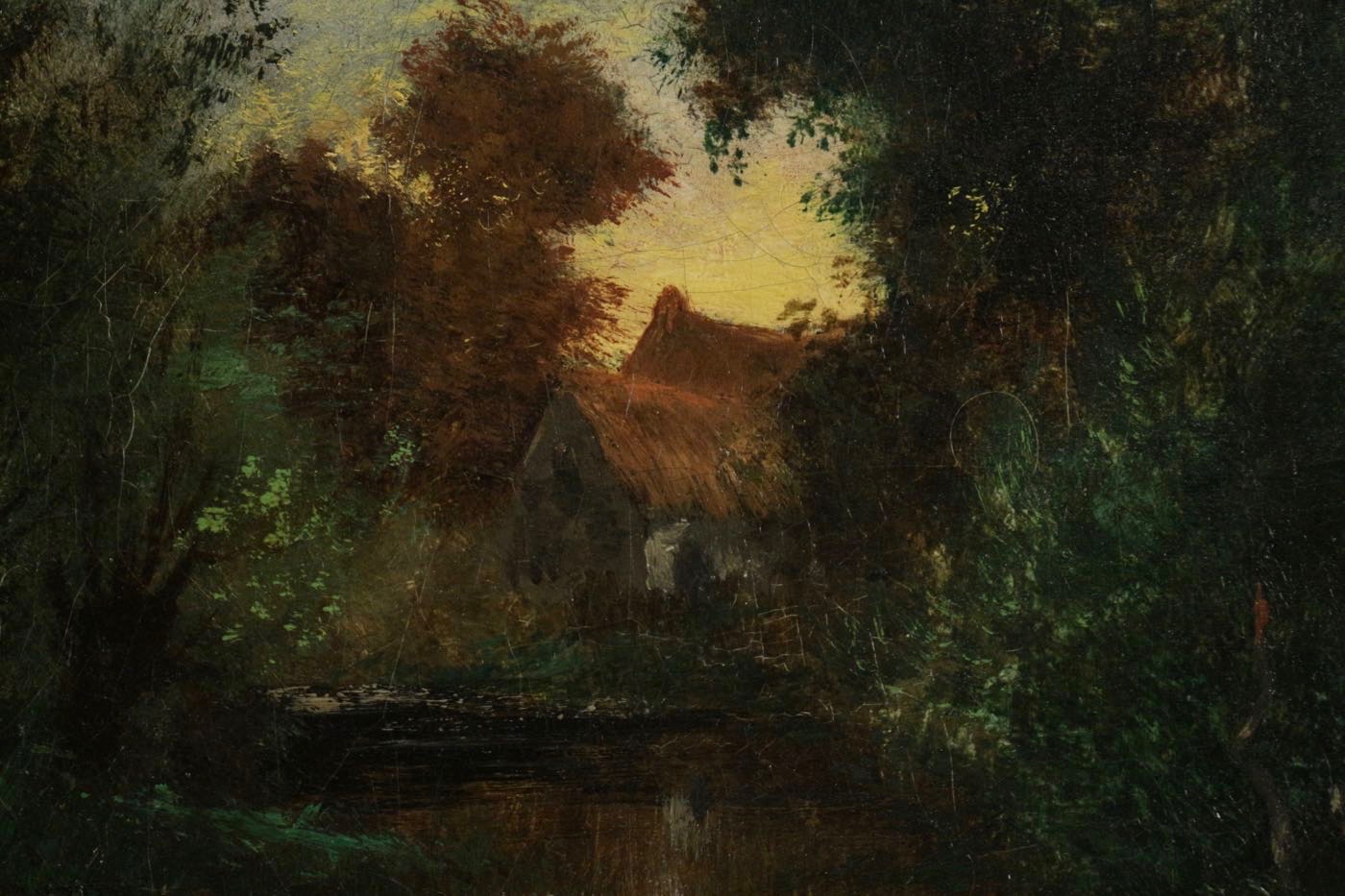Jules DUPRE
Twilight
Oil on canvas
JD monogram lower right
Size: 39 x 31.5cm
With frame: 60 x 53 cm
Price: €11,000
A sensitive painter, he represents here a morning scene, far from the mythological clichés of wild nature. The dark masses of the trees stop our gaze. Like a frame within a frame, the trees invite us to follow the clear river of the first light of day towards the cottage in the center of the canvas, hidden by nature. The touch is lively, it is the sign of the gesture that precedes Impressionism. Lighter, the bristles of the impastoed brushes are enough to suggest the movement of the wind in the leaves.
Looking at this painting, one can understand the admiration that Van Gogh had for the artist. Perhaps he detected in his work an avant-garde form of expressionism. The treatment of nature and light, marked by an intense yellow impasto, in this strong work by Jules Dupré reveals this.
Biography :
Born in 1811 in Nantes, Jules Dupré is considered one of the best landscape painters of the century (Bénézit, p. 77). His influences are multiple. He studies the Dutch masters and admires Rembrandt. During his stays in London, the painter was marked by English landscape painters, in particular the master of landscape, Constable, who would profoundly influence his work.
Jules Dupré is the founder of the school of modern French landscape, one of the five creators of the school of Barbizon with Rousseau, Millet, Daubigny, Corot. Attached to the Barbizon school, Jules Dupré took advantage of the invention of the paint tube in the early 1840s and the development of railway lines around Paris to put the lights of nature to the test of his brush.
His meeting with Théodore Rousseau is decisive; he paints at his side on the ground in the forest of Fontainebleau and learns to look at nature with sincerity and depth.
He practices a landscape painting characterized by light effects and an impasto of the pictorial material. During exhibitions at the Salons, his works are noticed.
At the Salon of 1835, Eugène Delacroix congratulated him on the quality of his skies. Camille Corot nicknamed him the “Beethoven of the landscape”. Through Van Gogh’s correspondence to his brother, we can read the painter’s deep admiration for his elder.
Jules Dupré, with a passionate and romantic temperament, exalted by the landscape of nature, is also known as a precursor of Impressionism. From the outdoors, it retains the calm of nature in opposition to the hustle and bustle of the booming industrial city.
Bibliography:
• Exhibition “The School of Barbizon: painting in the open air before Impressionism”, Lyon Museum of Fine Arts, 2002.
• Emmanuel Bénézit, Dictionary of painters, sculptors, draftsmen and engravers , volume II, Librairie Gründ, reed. 1976.
Museums:
• In Paris: Louvre Museum, Orsay Museum.
• Senlecq L’Isle Adam Museum, Reims Fine Arts Museum.
• Museum of Fine Arts of Canada; National Gallery of Art in London, the Hermitage in Saint Petersburg, the Metropolitan Museum of Art and the Frick Collection for New York, the museums of Washington, Memphis and Saint-Louis.





